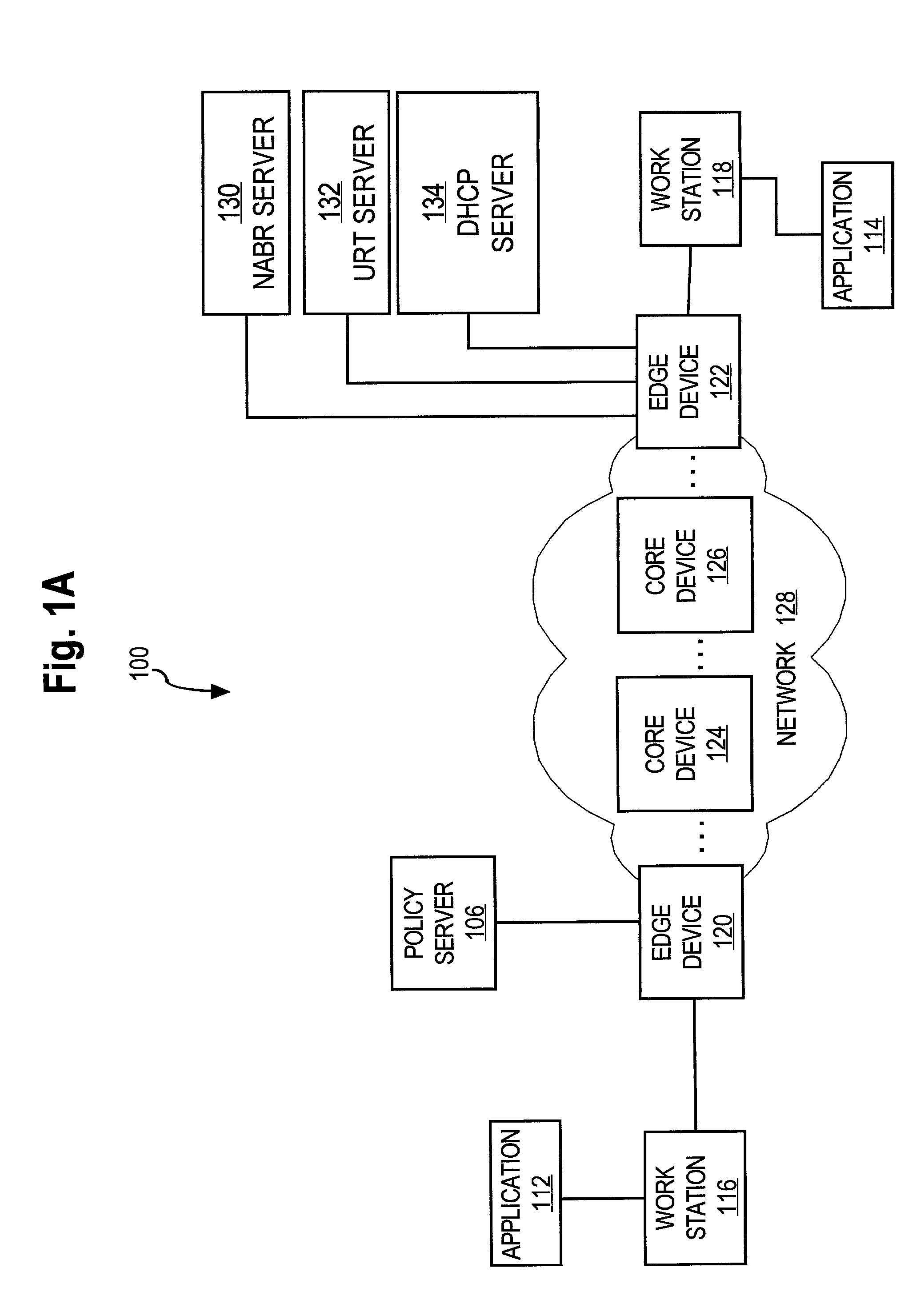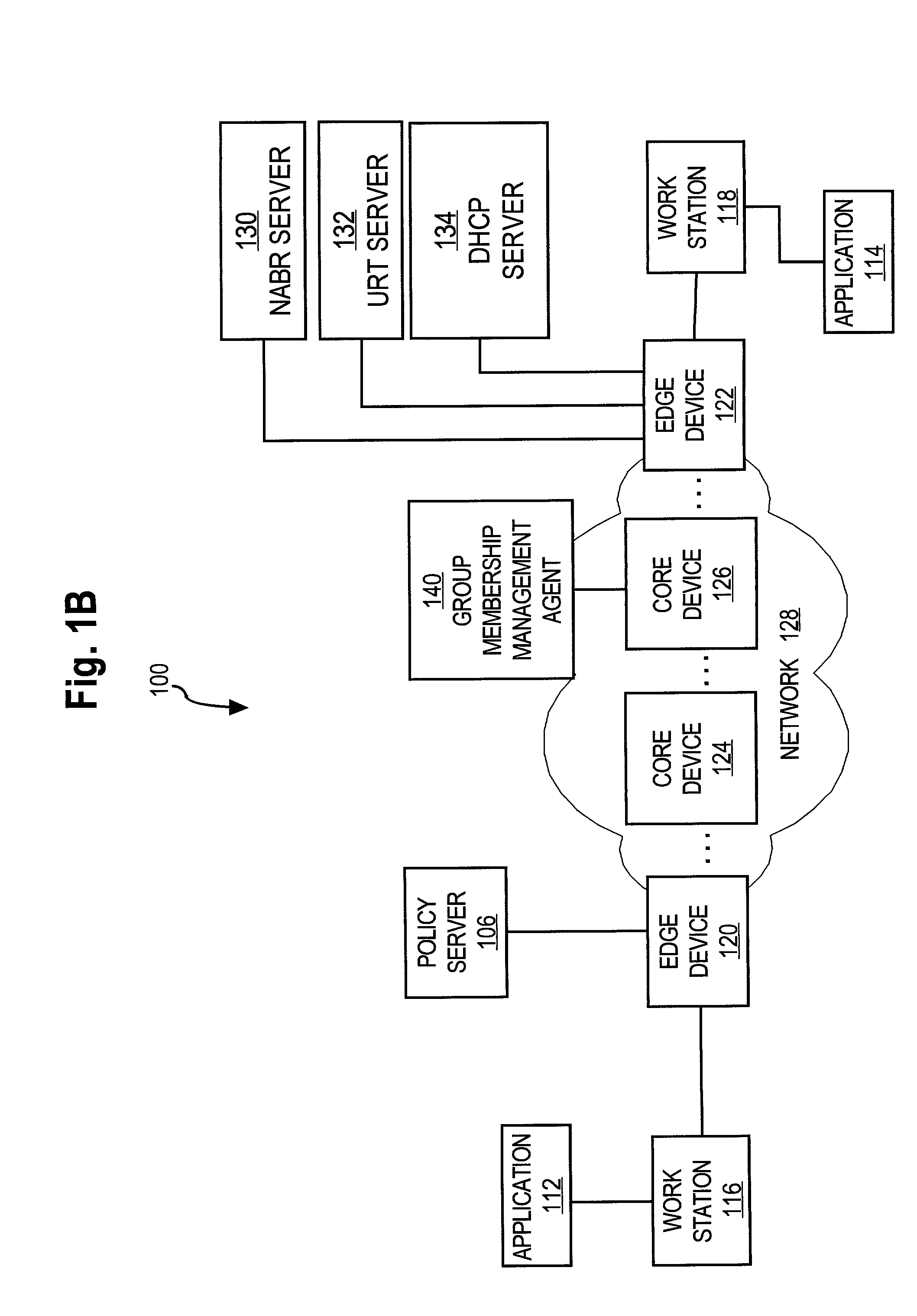Method and apparatus for selectively enforcing network security policies using group identifiers
a network security and group identification technology, applied in the field of network security enforcement, can solve the problems of limited applicability, inflexible approach, and not normally practicable implementation
- Summary
- Abstract
- Description
- Claims
- Application Information
AI Technical Summary
Benefits of technology
Problems solved by technology
Method used
Image
Examples
Embodiment Construction
[0038]A method and apparatus for selectively enforcing network security policy using group identifiers is described. In the following description, for the purposes of explanation, numerous specific details are set forth in order to provide a thorough understanding of the present invention. It will be apparent, however, to one skilled in the art that the present invention may be practiced without these specific details. In other instances, well-known structures and devices are shown in block diagram form in order to avoid unnecessarily obscuring the present invention.
[0039]Operational Context
[0040]FIG. 1A is a block diagram of a computer network system 100 that is provided to illustrate a structural context in which certain embodiments of the invention may be used. Generally, system 100 includes one or more network devices 120, 122, 124, 126, application programs 112, 114, a plurality of workstations 116, 118, a quality of service policy server 106, and a core network 128.
[0041]Netwo...
PUM
 Login to View More
Login to View More Abstract
Description
Claims
Application Information
 Login to View More
Login to View More - R&D
- Intellectual Property
- Life Sciences
- Materials
- Tech Scout
- Unparalleled Data Quality
- Higher Quality Content
- 60% Fewer Hallucinations
Browse by: Latest US Patents, China's latest patents, Technical Efficacy Thesaurus, Application Domain, Technology Topic, Popular Technical Reports.
© 2025 PatSnap. All rights reserved.Legal|Privacy policy|Modern Slavery Act Transparency Statement|Sitemap|About US| Contact US: help@patsnap.com



